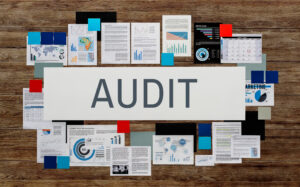Over the past three decades working with management systems implementation in several industries including maritime, manufacturing, and service, I’ve witnessed firsthand the evolution of ISO standards and the increasing challenge of maintaining multiple certifications. Primarily conflicting policies and responsibilities. ISO 9001 (Quality Management), ISO 14001 (Environmental Management), ISO 45001 (Occupational Health & Safety), and ISO 27001 (Information Security) are more commonly pursued in tandem today, driven by global supply chain expectations and stakeholder pressures.
A client I once worked with—a large aeronautical facility—maintained separate management systems for ISO 9001 and ISO 14001. The result? Duplicate documents, siloed responsibilities, and audit fatigue. They were spending more time managing the systems than actually improving performance. That’s when we introduced the concept of an Integrated Management System (IMS).
The Case for Integration: Efficiency, Consistency, and Strategic Alignment
When systems are fragmented, efficiency suffers. Integration streamlines documentation, eliminates duplication, and enables unified audits. But beyond efficiency, integrated systems foster consistency in decision-making and better alignment of strategic objectives.
Environmental management, for instance, shouldn’t operate in isolation. It intersects with operational quality (ISO 9001) and workplace safety (ISO 45001). ISO 9001 captures the processes and ISO 14001, and ISO 45001 help assess the environmental and safety risks to these processes. Integrating these perspectives supports sustainable performance, an approach increasingly expected by investors and customers alike.
Understanding Common Frameworks
Annex SL Structure: The Backbone of Integration
At the heart of modern ISO management standards is the Annex SL structure—a common high-level structure introduced by ISO to facilitate alignment. Annex SL defines 10 clauses that form the skeleton of all modern ISO standards. These include:
- Context of the organization
- Leadership
- Planning
- Support
- Operation
- Performance evaluation
- Improvement
This structure makes it easier to align, for example, the risk and opportunity clauses in ISO 14001 with similar requirements in ISO 9001 and ISO 45001.
Shared Clauses: Context, Leadership, Risks/Opportunities, Support
Clauses like context (Clause 4) and leadership (Clause 5) are nearly identical across standards. For instance, ISO 9001 and ISO 14001 both require organizations to identify internal/external issues and stakeholder needs. Recognizing these overlaps helps unify strategic planning across environmental, quality, and safety concerns.
Planning Integration
Gap Analysis Between Existing Standards
The first step in integration is a detailed gap analysis. When conducting a gap for an integrated management system the organization will need to identify overlaps, conflicts, and unique elements across existing systems. This not only highlights integration opportunities but also helps avoid redundancy.
Mapping Overlaps and Identifying Conflicts
Mapping reveals areas where procedures can be harmonized. For example, document control procedures under ISO 9001 and ISO 14001 can be merged, while roles defined under ISO 45001 may need alignment with other standards to avoid confusion.
Stakeholder Engagement and Cross-Functional Ownership
Buy-in from leadership and cross-department teams is crucial. In one project with a medium-sized paper manufacturing mill, resistance from the safety team initially stalled integration. Through workshops and shared performance metrics, we eventually fostered a sense of shared ownership across departments.
Implementation Strategy
Creating a Unified Documentation Structure
A common document structure enables centralized control and easy access. Using a process-based approach (e.g., Plan-Do-Check-Act) across all standards ensures consistency.
Integrated Risk and Opportunity Management
Risk-based thinking is foundational across ISO standards. Organizations should establish a unified risk register that includes environmental risks (like regulatory non-compliance), quality risks (like defective products), safety risks and information security threats.
Cross-Trained Teams and Common Audit Mechanisms
Cross-functional training builds awareness and reduces duplication. Integrated audits, where auditors assess compliance with multiple standards in a single visit, reduce disruption and provide a holistic view of performance.
Challenges and Pitfalls
Cultural Resistance
One of the biggest obstacles is organizational culture. Teams often view their standard (especially environmental or safety) as a domain-specific fortress. Breaking down silos requires patient change management and clear communication about benefits. By appreciating existing management systems and not using a cookie cutter approach QMII makes the changes more embraceable.
Over-Engineering vs. Under-Documentation
Too much integration can result in a bloated system that’s difficult to manage. Conversely, under-documentation risks non-conformities. Striking the right balance is an art, guided by the People – Process – System approach of QMII.
Certification Body Expectations
Not all certification bodies prefer to conduct integrated audits. Be sure to select a registrar experienced in integrated systems and let them know of your desire to conduct integrated audits. This will save your organization time and money.
Real-World Examples of Integration
One of the most compelling transformations I’ve seen was at a shipyard that integrated ISO 9001, ISO 14001, and ISO 45001. Post-integration, their audit time was reduced by 35%, and customer complaints dropped by 25%—largely due to better process visibility and ownership.
In the service sector, a hotel chain integrated ISO 14001 and ISO 9001, creating eco-conscious guest experiences tied directly to quality objectives. Environmental impact reports became a value-added feature in their marketing strategy.
KPIs and Metrics Post-Integration
Integrated systems enable better performance tracking. Examples of key metrics include:
- Combined audit findings (number, severity, recurrence)
- Resource savings from reduced duplication (time and cost)
- Stakeholder satisfaction scores (employees, customers, regulators)
Conclusion: The Future of IMS (Integrated Management Systems)
Integrated Management Systems are not just a trend; they are a necessity in an increasingly interconnected and regulated world.
Environmental management must be embedded within a larger performance ecosystem. It should influence and be influenced by quality, safety, and information security. Organizations that succeed in this integration journey will not only reduce waste—both physical and procedural—but also build agility, trust, and long-term value.
—
About the Author
Dr. Julius is a Senior Consultant at QMII with over 25 years of experience in ISO and aerospace quality systems. He has trained and guided hundreds of U.S. defense contractors on AS9100 and compliance, turning certification into a competitive advantage.




